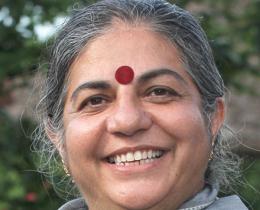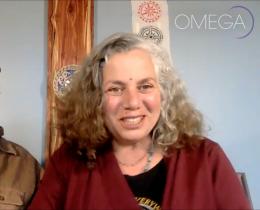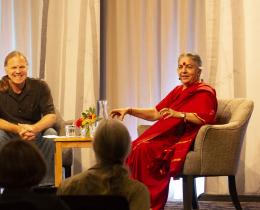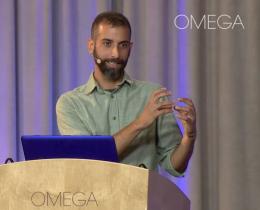When Henry Hudson made his way up the river that now bears his name, he made an observation about the land surrounding it.
During his interactions with the indigenous people along the river’s banks, Hudson noted that the land was the “finest for cultivation” that he had ever set foot upon.
This was not news to his hosts. After all, they had been farming the valley’s rich soil for centuries.
What the native people could not know is that over the next few hundred years, an unimaginable invasion of foreigners would appropriate their land and nearly extinguish a deep cultural heritage.
But now, more than 400 years later, in a corner of a small town in the Hudson Valley, a small measure of reparation is taking place. And fittingly, it is happening through cultivation of the same land that Hudson found so fertile.
Now in its third year, the Native American Seed Sanctuary in Hurley, New York, is providing perspective, healing, food, and education through the production of indigenous varieties of corn, beans, squash, and sunflowers.
The sanctuary is run by the nonprofit Seedshed in partnership with Rowen White of the Indigenous Seed Keepers Network, Mohawk leaders from Akwesasne, and the Hudson Valley Farm Hub, a nonprofit agricultural center that supports the project with land, funding, and farm assistance.
Precious Gift Becomes a Seed of an Idea
The sanctuary accounts for a small portion of land at the Farm Hub. But its impact is profound. And it all started with a few seeds.
Ken Greene, a longtime advocate for seed sovereignty and a cofounder of Seedshed, was trying to figure out what to do with some seeds that had been gifted to him by White, a seed keeper who hails from the Mohawk community of Akwesasne.
“It’s a big responsibility,” Greene said, “to be gifted seeds from another culture that have ceremonial and cultural significance.”
For hundreds of years, the Mohawk thrived in what is now eastern New York and southern Quebec. About 15,000 Akwesasne now live in what used to be their fishing grounds, the federally recognized St. Regis Mohawk Reservation that straddles the Saint Lawrence River in New York and Canada.
In this northernmost corner of their ancestral lands, crops that had once flourished farther south fare poorly.
“We basically live in a swamp where four rivers converge,” said Mary Arquette, a Mohawk from Akwesasne who is one of the indigenous leaders at the seed sanctuary. “The soil is very clay, very wet, and very heavy.”
Two Ears of Mohawk Red Corn Produce New Bounty
Akwesasne farmers had managed to keep seed varieties going, Arquette said, but could not produce large enough crops to feed the community. As recently as three years ago, only two ears of Mohawk Red bread corn remained hanging inside a cannery at Akwesasne Freedom School in Hogansburg, New York.
Shortly after Greene received his gifted seeds, he got a call from Bob Dandrew, then the director of the Hudson Valley Farm Hub. Dandrew was thinking about growing indigenous varieties and wanted Greene’s advice.
The strange coincidence led to the first planting in 2016 of indigenous varieties of corn, beans, and squash—traditionally known as the “three sisters”—as well as sunflowers.
White, the seed keeper, used the two Mohawk Red ears to grow out new seed stock and sent Seedshed six pounds to grow in the sanctuary. Those seeds, in turn, yielded 2,000 pounds of corn within two years.
“I am really happy because we are able to be more than caretakers of the seeds,” Arquette, the Akwesasne, said. “We are able to be caretakers of our community, so we can feed our children.”
Indeed, annual harvests often strain the suspension of the tribal van used to haul the food back home.
All Seeds and Food Are Repatriated to Akwesasne
Though Greene also is a cofounder of the Hudson Valley Seed Company, he notes that the Akwesasne seed varieties are not for sale.
“Everything is repatriated back to the home community,” Greene said. “So it’s a very different way of stewarding and caring for seeds—recognizing that the cultural context is more important than thinking of it as a commodity.”
Each growing season begins with a planting ceremony and ends with a two-day harvest. Participants range from Mohawk guests and farm workers from Mexico, to local landowners and families.
Greene said part of Seedshed’s mission is to bring people together. The harvest days, he said, are very emotional. Indigenous seeds coming home represent not just a form of cultural restoration, but also a form of cultural healing. It is an opportunity to consider how we move away from the trauma of the past toward something more collaborative and regenerative.
“To me, you can’t force that kind of thing to happen,” Greene said. “But the seeds wind up being the catalyst to bring us together to do that work.”




